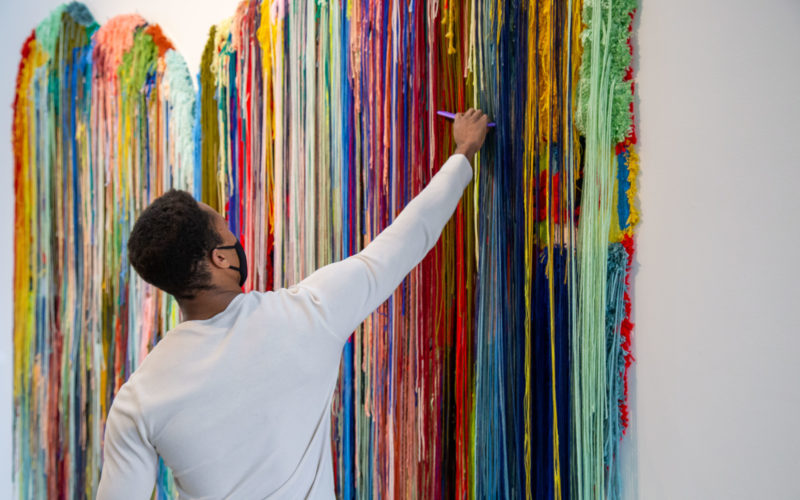Make a gift to help keep Atlanta Contemporary free, safe, and open to all.
Robert Beatty repurposes the tools of outmoded technology, creating hybridized drawings, videos, sculptures, music, and installations that blur sensory boundaries. In his visual world, the lines between the artificial and organic are almost completely eliminated, an effect that is both comforting and disquieting. In Suspended Passthrough, Beatty has filmed a manufactured landscape that he hand-crafted from concrete forms. Those forms are molded from blister packs—the plastic containers that hold many everyday products—and include packaging for batteries, phone chargers, and Trader Joe’s frozen garlic. For this site-specific work, Beatty employed film techniques from decades past, particularly those used in sci-fi programs from the 1970s and 80s.
Bio
Robert Beatty
Robert Beatty (b. 1981, Lexington, KY) is an artist and musician based in Lexington, Kentucky. His multi-disciplinary work in the fields of drawing, digital art, sculpture, video, graphic design, and sound use outmoded technology and emulation of obsolete techniques to yield organic and otherworldly results. He records experimental electronic music as Three-Legged Race and is a member of noise band Hair Police. Beatty emerged from the mid 2000’s American noise music underground to become one of the most sought-after figures in contemporary album art, designing upwards of 75 record covers in the past 10 years. His designs include award winning album covers and logos for Tame Impala, Neon Indian, Real Estate, Peaking Lights, Kesha, and Ariel Pink, among others. In addition to his music and graphic art, Beatty has quietly created dozens of moving-image works: music videos for compositions by himself and others, elements of his art installations, videos made collaboratively as part of the Resonant Hole collective he co-founded, and stand-alone pieces. Where Beatty’s album designs call to mind the heyday of 1960s-70s psychedelic cover art, among many other influences, his video works reflect his devotion to a wide range of experimental cinema, in particular the films of Polish animation luminaries such as Piotr Kamler and the pioneering computer art of Lillian Schwartz and others. In fact, seeing his moving-image work all together is like taking a tour – albeit a highly personal and idiosyncratic one – through some of the most fascinating dimensions of 20th and 21st century visual culture. And yet, every one of his compositions, designs, and videos is suffused with his unique sensibility, at once visionary and precise.
